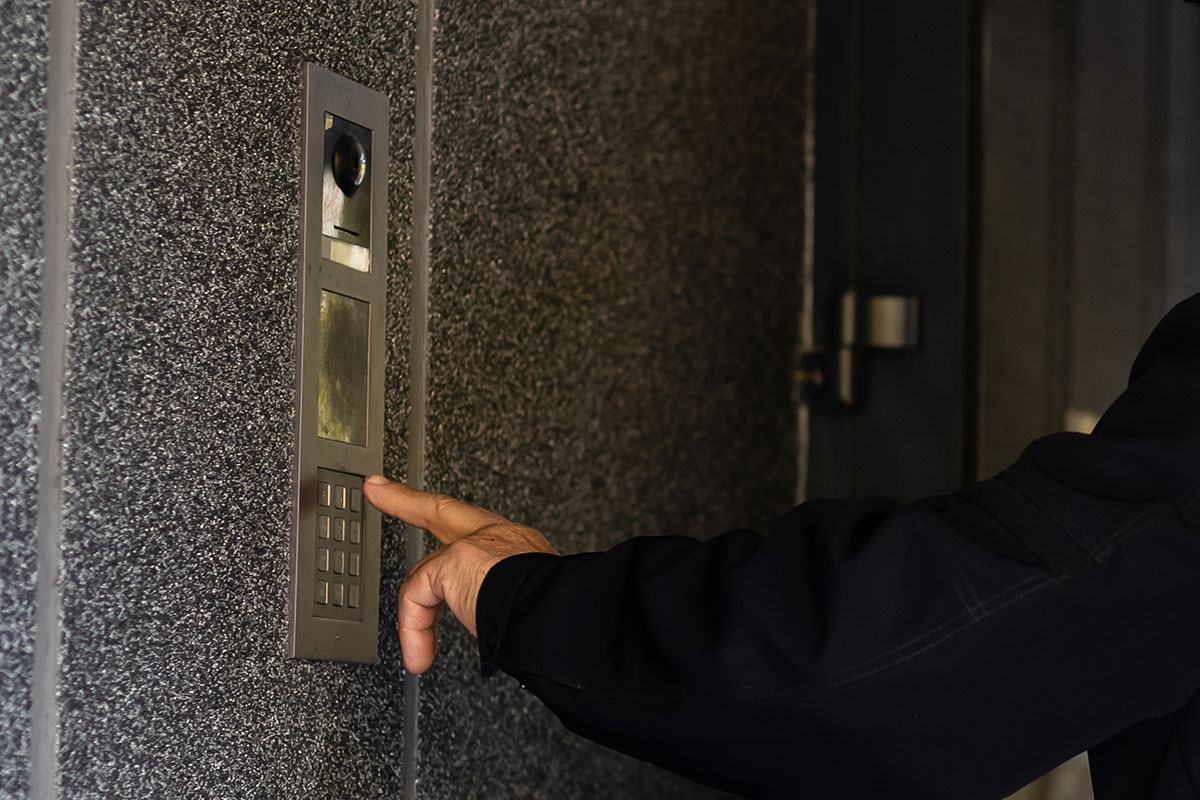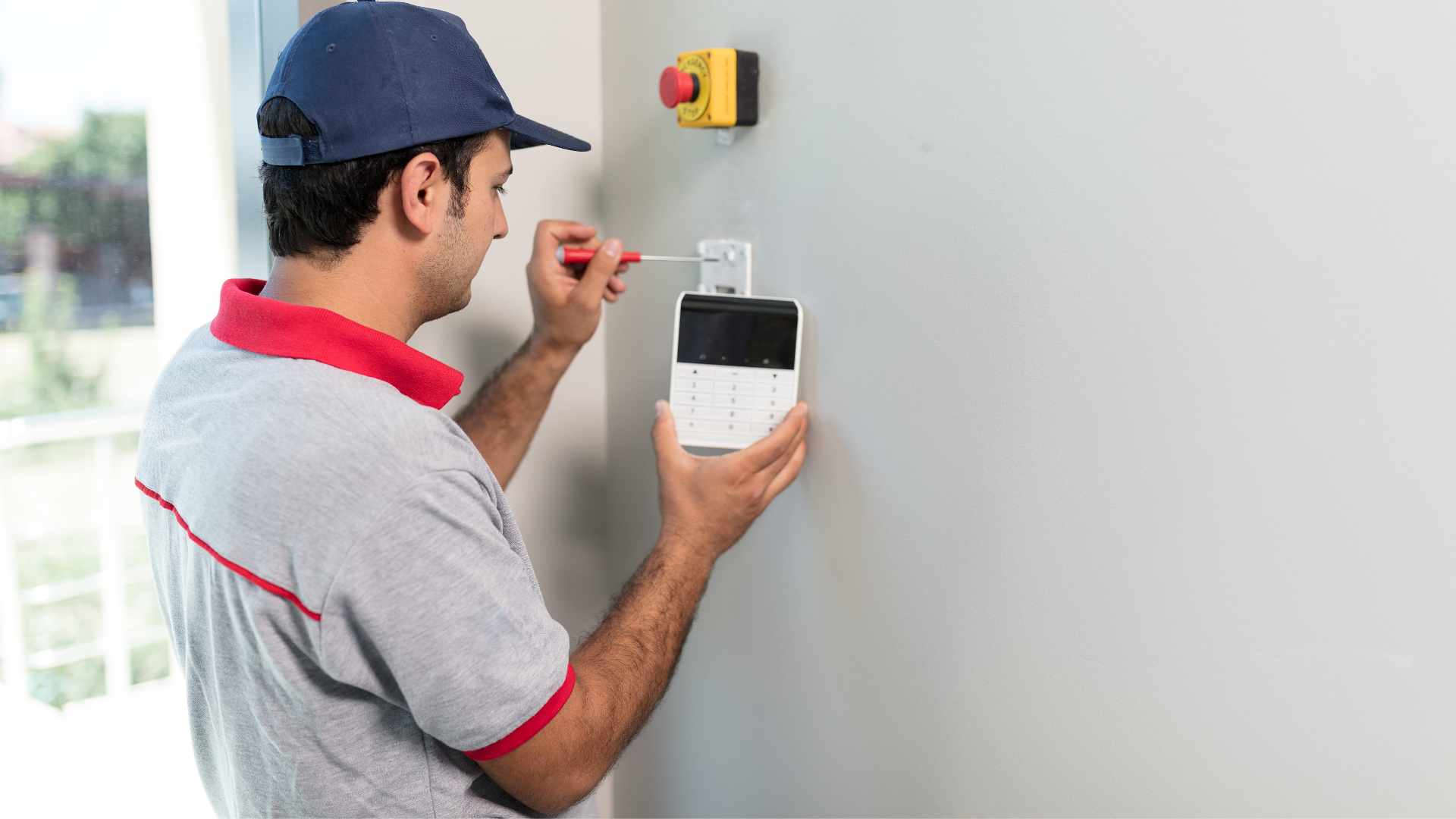As technology advances, so do the methods and tools available to protect our homes and businesses. A perimeter alarm system is one of the best security precautions. But what exactly is a perimeter alarm system, and how does it work?
A perimeter alarm system is designed to detect unauthorised intrusions around your property’s boundaries. Unlike standard indoor alarm systems, which only activate when an intruder is already inside, perimeter alarm systems act as the first line of defence, identifying potential threats before they breach the building. This early detection capability makes perimeter alarms crucial to comprehensive security strategies.
In this blog, we will explore the workings of perimeter alarm systems, exploring their key components, operational mechanisms, and the various types available on the market. We’ll also discuss the advantages of installing such a system, the challenges you might face, and the future trends in this technology. Whether you’re a homeowner looking to enhance your security measures or a business owner wanting to protect your assets, understanding how perimeter alarm systems work will help you make informed decisions about your security needs.
How A Perimeter Alarm System Works?
A perimeter alarm system is an advanced security measure designed to protect properties by detecting intrusions at the boundary. These systems employ various technologies to ensure comprehensive monitoring and quick action during a security breach.
Basic Components And Functionality
A perimeter alarm system includes several key components, such as a control panel and various sensors. These sensors are strategically placed along the property’s perimeter to monitor suspicious activity. The system may use cameras, alarms, or sirens to alert property owners or security personnel if an intrusion is discovered.
Types Of Sensors
The effectiveness of a perimeter alarm system largely depends on the types of sensors used. Common sensor types include:
- Photoelectric Beams: Detect the interruption of an infrared beam between two points.
- External PIRs (Passive Infrared Sensors): Detect movement based on changes in infrared radiation.
- Laser Sensors: Laser beams detect breakage in the line of sight.
- Radar Sensors: Utilise radar waves to detect moving objects.
- Fibre-Optic Detection Sensors: Detect vibrations or pressure changes along a fibre-optic cable.
- Microwave Sensors: Use microwave signals to detect motion or presence.
- Electric Monitored Fences: Provide a physical barrier with embedded sensors that detect tampering.
- Vibration Sensors: Detect vibrations caused by movement near the sensor.
- Seismic Sensors: Detect ground vibrations typically associated with digging or heavy footsteps.
- Monitored CCTV: Cameras integrated with analytic software to identify and alert on specific activities.
Installation Process
Installing a perimeter alarm system is critical in safeguarding your property, whether a commercial enterprise or a private residence. This guide will outline the essential steps in the installation process, ensuring that your system is robust, efficient, and tailored to your specific security needs.
Planning And Consultation
- Initial Consultation: The process begins with an initial consultation, during which a security expert evaluates your property. This assessment helps the security expert understand the site’s requirements and vulnerabilities.
- Custom Design: A custom security plan is developed based on the assessment. This plan includes selecting appropriate equipment, such as sensors, cameras, and control units, that best suits the property’s layout and security needs.
Installation Steps
- Site Preparation: Before installation, the site is prepared by clearing any obstacles that might interfere with the equipment’s functioning. This step ensures that all components will operate effectively without any physical hindrance.
- Mounting Sensors and Cameras:
- Sensors: Install motion detectors, window, and door sensors at key points around the perimeter. These devices are crucial for detecting any unauthorised entry.
- Cameras: Position surveillance cameras to cover all critical areas. Modern cameras often come with features like night vision and motion detection, enhancing the overall security coverage.
- Wiring and Connections: Run the necessary wiring to connect all components to the central control unit. This includes power lines and data cables, ensuring all devices communicate seamlessly.
- Control Unit Setup: Install the control unit in a secure, accessible location. This unit is the system’s brain, receiving signals from all sensors and cameras and triggering alarms when necessary.
- Integration with Other Systems: Integrate the alarm system with other security measures, such as access control systems, electric fencing, and security beams. This integrated approach provides a comprehensive security solution.
- Alarm Activation: Once all components are in place, activate the alarm system. Make sure each part works by giving it a test. Correctly and respond as expected.
Testing And Calibration
- System Testing: Conduct a thorough test of the entire system. This includes triggering sensors to verify that alarms sound correctly and cameras record accurately.
- Calibration: Adjust the sensitivity of sensors and the focus of cameras to eliminate false alarms and ensure precise detection. Calibration ensures that the system is fine-tuned to the specific environment it is protecting.
User Training And Handover
- User Training: Provide comprehensive training to the property owner or designated security personnel. This training covers operating the system, responding to alarms, and performing basic troubleshooting.
- Handover: Upon successful installation and testing, hand over the system to the client. Provide all necessary documentation, including user manuals and contact information for technical support.
Ongoing Maintenance And Support
- Scheduled Maintenance: Set up a schedule for regular maintenance checks to keep the system in optimal working condition. This includes inspecting and cleaning sensors and cameras, checking wiring integrity, and updating software.
- 24/7 Monitoring: Offer 24/7 monitoring services to ensure continuous protection. This service includes immediate response to alarms and real-time notifications to the property owner or security team.
- Support and Upgrades: Provide ongoing support and upgrades to adapt to evolving security needs. This ensures the system remains effective against new threats and integrates with emerging technologies.
Installing a perimeter alarm system involves a detailed process of planning, installation, testing, and maintenance. By taking these actions, you can safeguard your property against intrusions, providing peace of mind and enhanced security.
Advantages Of Perimeter Alarm Systems
Enhanced Security For Businesses And Homes
Perimeter alarm systems enhance physical security by creating a robust first line of defense. They manage people and assets around a site, allowing entry only to those with authorization. These systems are crucial in high-security industries to prevent unauthorized access and protect critical infrastructure.
Prevention, Detection, And Delay
Perimeter alarm systems are designed with three key factors: prevention, detection, and delay. Prevention involves effective fencing and barriers that discourage unauthorized access. Detection is achieved through sensors and alarms that enable timely security responses. Delay systems are designed to slow down intruders, allowing security personnel to respond appropriately.
Types Of Perimeter Protection Solutions
Physical barriers such as fences, bollards, and barriers create physical deterrents. Electronic security includes disturbance or vibration sensors, tension sensors, CCTV cameras, and real-time alarm systems that detect suspicious activities. Additionally, some facilities employ security personnel to monitor and respond to potential threats.
Comprehensive Coverage
Full perimeter alarm systems secure every window and door with reed switches and glass break sensors, preventing intruders from exploiting weak points. These systems are particularly beneficial for homes where occupants are present or where large pets might trigger motion detectors.
Regular Maintenance And Testing
It is vital to guarantee the accuracy and efficiency of perimeter alarm systems through regular testing and preventive maintenance by qualified technicians. This is crucial for sustained effectiveness.
Perimeter alarm systems are essential for creating a secure environment by preventing, detecting, and delaying unauthorised access. Physical barriers, electronic security measures, and regular maintenance offer robust protection for businesses and homes, particularly in high-risk and high-security sectors.
Conclusion
A perimeter alarm system is crucial to detect unauthorised intrusions around a property’s boundaries. It acts as the first line of defence, identifying potential threats before they breach the building. This early detection capability makes perimeter alarms essential to comprehensive security strategies.
Integration and smart features of perimeter alarm systems include home automation integration, voice control, remote monitoring, real-time alerts, video verification, and environmental sensors. Common sensor types include photoelectric beams, external PIRs, laser, radar, fibre-optic detection, microwave, electrical, fences, vibration, seismic, and monitored CCTV.
Modern perimeter alarm systems often integrate with security measures such as CCTV cameras, providing real-time verification and making informed decisions quickly. More sophisticated systems like thermal fences can be employed for high-security environments, using thermal cameras combined with artificial intelligence to detect and identify intrusions accurately, day or night. Some systems are designed to detect intrusions before they happen, such as those that monitor fence lines for cutting or climbing.
Installation and maintenance of a perimeter alarm system require professional knowledge and regular maintenance to keep the system functioning optimally and updated with the latest technological advancements. Combining sensors and integrating them with other security systems like CCTV offers comprehensive protection for residential and commercial properties.
FAQs About Perimeter Alarm System
What Is A Perimeter Alarm System?
A perimeter alarm system is designed to detect unauthorised intrusions around a property’s boundaries, providing an early warning before an intruder enters the building.
How Does A Perimeter Alarm System Work?
Perimeter alarm systems use sensors along the property’s perimeter to detect movement, breaches, or other signs of unauthorised access. When a sensor is triggered, it sends a signal to the control panel, which can activate alarms and notify security personnel.
What Are The Main Components Of A Perimeter Alarm System?
Key components include control panels or keypads, security cameras, motion sensors, door and window sensors, glass break detectors, sirens, yard signs, and external beam sensors.
Can Perimeter Alarm Systems Be Integrated With Other Security Measures?
Modern perimeter alarm systems can integrate with other security measures, such as CCTV cameras, access control systems, home automation, and environmental sensors, for comprehensive protection.
What Types Of Sensors Are Used In Perimeter Alarm Systems?
Common sensor types include photoelectric beams, passive infrared sensors (PIR), laser sensors, radar sensors, fibre-optic detection sensors, microwave sensors, electric monitored fences, vibration sensors, and seismic sensors.


